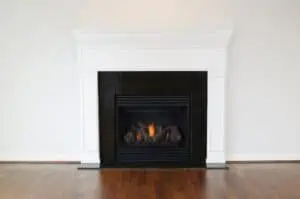How to Repair a Brick Fireplace
The fireplace is one of the most iconic features in any home. However, problems can occur without warning. Cracks and chipping may develop, or debris may accumulate, and your fireplace may smoke. Fortunately, you can get it fixed. There are a few simple steps that you can take to improve your fireplace.
(Searching in Google “gas fireplace installation phoenix“? Contact us today!)

One of the first things to do is to clean out the chimney of any debris. This will help prevent further damage to the bricks. Also, use a masonry brush to brush away the loose mortar. It’s a good idea to lay down a canvas drop cloth on the floor immediately under the work area. After all, you don’t want to get dust in your eyes.
Next, you need to see what the problem is. A fireplace is comprised of many different components, so it’s important to know where the problem is. You can do some of the repairs yourself, but if the damage is extensive, you should hire a professional. An experienced masonry expert will be able to assess your problem and make recommendations.
In most cases, repairing a fireplace is a multi-step process. You’ll need to identify the problem, find out what the right solution is, and follow through. Some of the most common issues include cracks in the chimney and firebox, sagging chimneys, and water leakage. If you need to repair a brick fireplace, you’ll want to know how to clean the brick, how to remove the soot from the fireplace, and how to replace the damaged mortar.
As with any masonry project, you’ll need to have a wide variety of tools on hand. These include a tuck pointer and a trowel, as well as a masonry chisel and a grinder. While you’re at it, a small wire brush will also come in handy.
You should also consider having a masonry expert assess your fireplace. These professionals can check the internal components of your fireplace, and may be able to fix your chimney cracks and other problems. They can also recommend the best materials for your type of fireplace.
While you’re at it, you might also consider installing a refractory heat-resistant caulk to keep your fireplace in good shape. Typically, refractory caulk is used to seal the chimney and flue, but it’s also great for preventing expansion.
Finally, you’ll need to install a cap on your chimney to keep smoke from entering your room. A good cap is also a great way to add a touch of class to your fireplace. Of course, you should be sure to choose one that’s rated to withstand heat.
Lastly, you might consider installing a fireplace ventilation fan to ensure the smoke isn’t coming into your living room. While you’re at it, you can also add a wood paneling to the mantle. And if you don’t mind cooking marshmallows on your outdoor brick fireplace, it can be a fun family activity during the cold months.
Although you should consult an expert to do the job properly, you can’t go wrong by following these tips. Just remember to follow the package directions for the best results.

